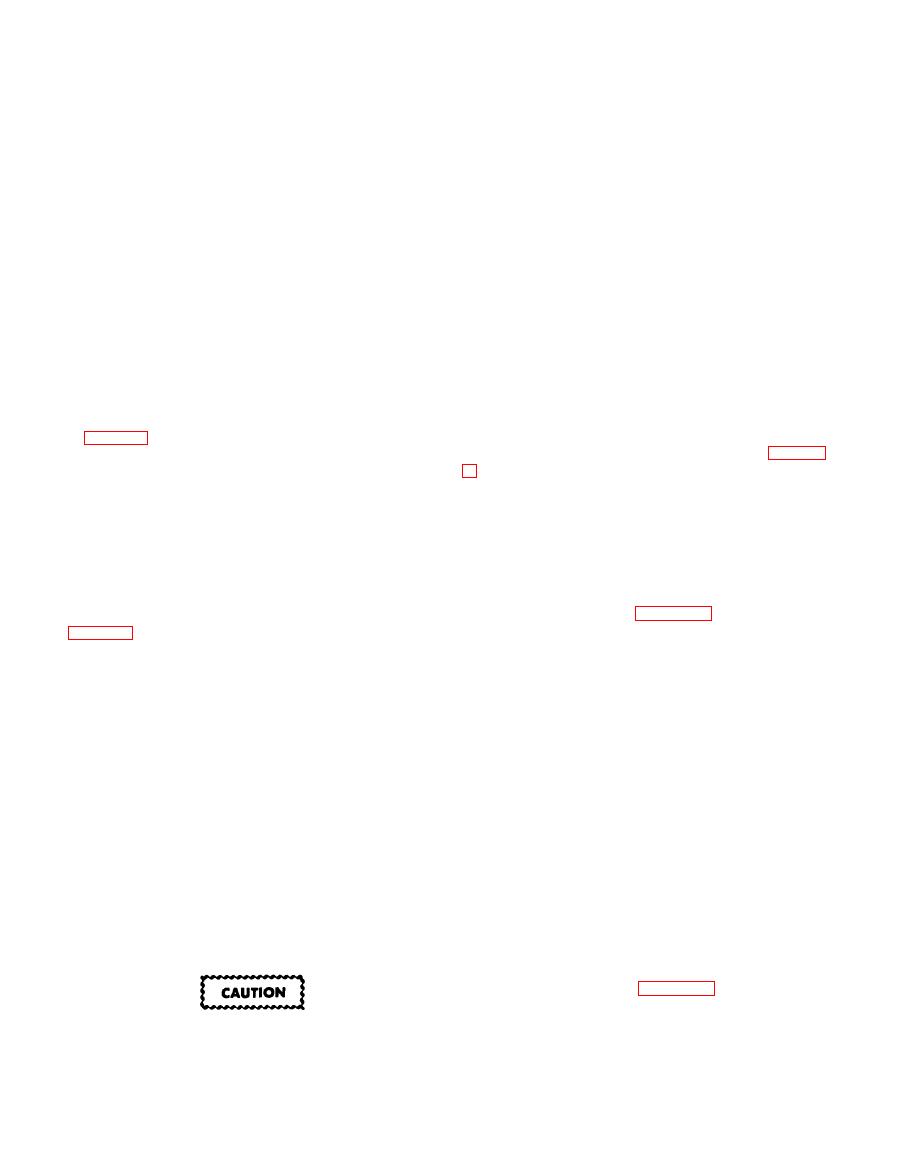 |
|||
|
|
|||
|
Page Title:
SECTION II CHECKOUT AND ANALYSIS |
|
||
| ||||||||||
|
|
 TM 55-1740-200-14
SECTION II CHECKOUT AND ANALYSIS
c. With engine operating, check for evidence of oil and
4-9. GENERAL.
coolant leaks.
d e t e r m i n e whether t h e towing tractor, tractor
d. Place drive tractor in rear wheel steer position
s u b - a s s e m b l i e s and systems, meet the minimum
check for evidence of oil leaks in steering system.
performance standards required for operation. Checkout,
and check operation
e. Operate the tractor
analysis, inspection, adjustment, and testing procedures
transmissions and axles.
are contained in this section and shall be followed when
applicable.
f. Stop the tractor and check operation of brakes.
Station an observer to check operation of stoplight when
i n f o r m a t i o n o n limits, clearances, and torque
brakes are actuated.
specifications.
g. Test operation of all lights. Station an observer to
check operation of headlights when dimmer switch is
item and figure numbers used in disassembly procedures
actuated.
in Chapter 4, Section III.
h. Conduct all operational checks, (Refer to Chapter
3, Section V.)
4-17. ADJUSTMENT. Adjustments for the complete
tractor are covered in the adjustment paragraph for each
component.
as
follows:
4-18. UPPER CAB ASSEMBLY.
a. Ensure all components are properly lubricated in
accordance with lubrication instructions. (Refer to
upper cab assembly as follows:
Chapter 3, Section IV.)
a. Inspect mirror (12) for cracks or fogging.
b. Check all components for secure mounting.
b. Inspect all glass for cracks or fogging.
c. Check all linkage for secure and proper installation.
c. Inspect all moulding and weatherstrips for wear or
a. Start tractor engine and observe operation of all
tractor indicating instruments.
d. Inspect shell (35) for dents, chipped paint or rust.
e. Inspect for loose or missing attaching hardware.
If engine oil indicator does not indicate
pressure within 30 seconds, stop engine and
determine cause.
4-21. ADJUSTMENT. None required.
b. Allow engine to idle until normal operating
temperature (160 to 180 F) is reached.
lower cab as follows:
If engine coolant stays below, or rapidly rises
a. Inspect weatherstrip (13) and moulding (14) for
above normal temperature range, stop engine
wear or deterioration.
and determine cause.
|
|
Privacy Statement - Press Release - Copyright Information. - Contact Us |